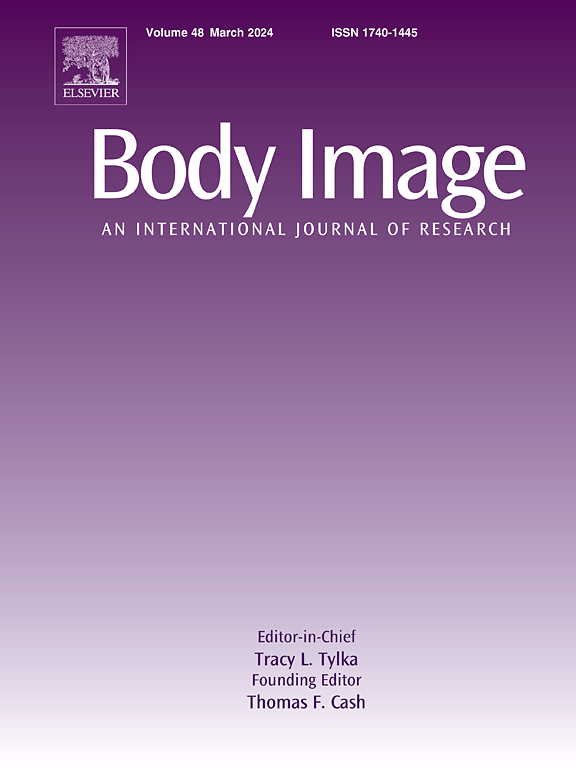社交媒体偶然曝光的外貌与青少年的身体形象:概念回顾。
IF 5.4
1区 心理学
Q1 PSYCHIATRY
引用次数: 0
摘要
研究表明,年轻人通过社交媒体传达的外貌理想来管理自己的身体形象,而社交媒体的这种使用维持和/或强化了现有的身体形象问题。虽然有用,但这项研究只关注有意的社交媒体曝光/使用:有目的地使用与外表相关的社交媒体内容来满足特定需求。然而,年轻人经常偶然遇到外观内容,而没有主动搜索;也就是说,偶然出现在社交媒体上。到目前为止,研究还没有区分偶然和故意的外表暴露,并调查每一种与身体形象的关系。这篇综述通过确定社交媒体偶然曝光可能与年轻人身体形象相关的不同方式来解决这一差距。我们首先解释了偶然的社交媒体曝光促进积极身体形象的潜力,重点是曝光多样性(暴露于不同的外观内容)。然后,我们思考在何种条件下,社交媒体偶然曝光可能促进曝光多样性。最后,我们讨论了认知反应状态如何调解社交媒体偶然暴露与身体形象结果之间的关系,以及社会身份的作用。最后,我们就如何在未来的身体形象研究中纳入社交媒体附带的外观暴露提出了建议。本文章由计算机程序翻译,如有差异,请以英文原文为准。
Social media incidental appearance exposure and young people’s body image: A conceptual review
Research has shown that young people manage their body image by relying on appearance-ideals conveyed by social media and such use of social media maintains and/or reinforces existing body image issues. While useful, this research exclusively focuses on intentional social media exposure/use: the purposeful use of appearance-related social media content to fulfill particular needs. However, oftentimes young people incidentally encounter appearance content without actively searching for it; i.e., incidental appearance social media exposure. To date, research has yet to differentiate between incidental and intentional appearance exposure and investigate how each of these relates to body image. This review addresses this gap by identifying different ways in which social media incidental exposure may relate to young people’s body image. We first explain the potential of incidental social media exposure to promote positive body image, focusing on exposure diversity (exposure to diverse appearance content). Then we reflect upon conditions under which social media incidental exposure may facilitate exposure diversity. Lastly, we discuss how cognitive response states mediate the relationship between social media incidental exposure and body image outcomes, and the role of social identities. We conclude with recommendations for how to include social media incidental appearance exposure in future body image research.
求助全文
通过发布文献求助,成功后即可免费获取论文全文。
去求助
来源期刊

Body Image
Multiple-
CiteScore
8.70
自引率
28.80%
发文量
174
期刊介绍:
Body Image is an international, peer-reviewed journal that publishes high-quality, scientific articles on body image and human physical appearance. Body Image is a multi-faceted concept that refers to persons perceptions and attitudes about their own body, particularly but not exclusively its appearance. The journal invites contributions from a broad range of disciplines-psychological science, other social and behavioral sciences, and medical and health sciences. The journal publishes original research articles, brief research reports, theoretical and review papers, and science-based practitioner reports of interest. Dissertation abstracts are also published online, and the journal gives an annual award for the best doctoral dissertation in this field.
 求助内容:
求助内容: 应助结果提醒方式:
应助结果提醒方式:


